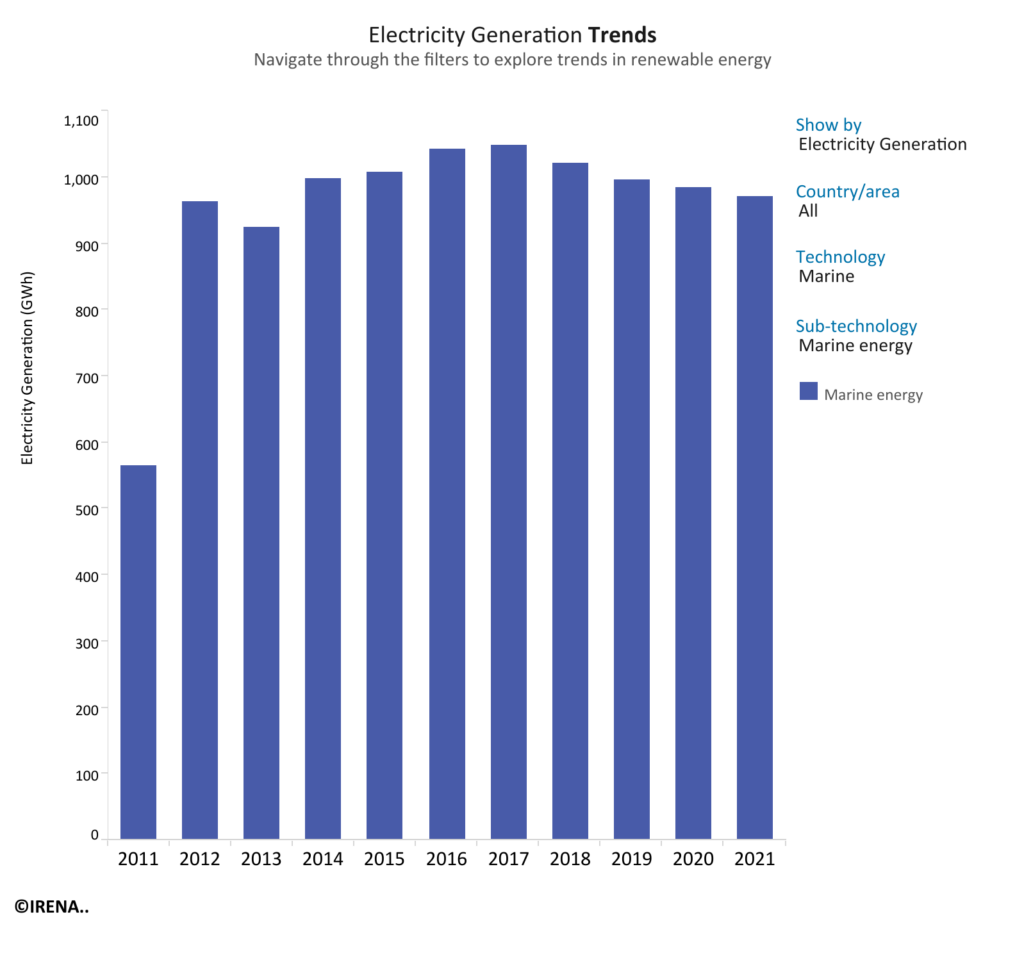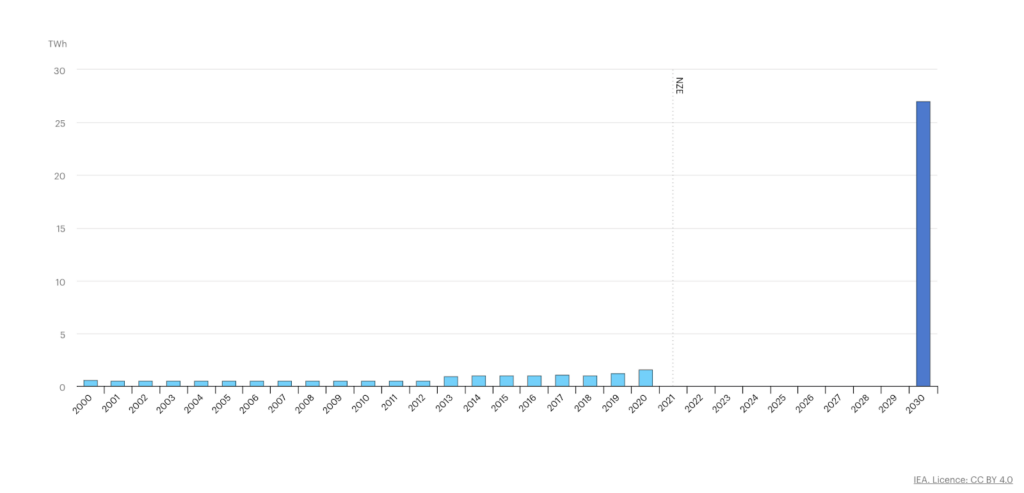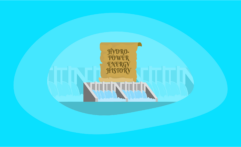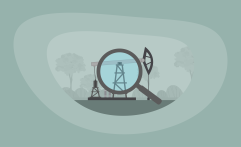The History of Wave Energy: The Big Picture
Affiliate Disclosure
Hey fellow impactful ninja ?
You may have noticed that Impactful Ninja is all about providing helpful information to make a positive impact on the world and society. And that we love to link back to where we found all the information for each of our posts.
Most of these links are informational-based for you to check out their primary sources with one click.
But some of these links are so-called "affiliate links" to products that we recommend.
Why do we add these product links?
First and foremost, because we believe that they add value to you. For example, when we wrote a post about the environmental impact of long showers, we came across an EPA recommendation to use WaterSense showerheads. So we linked to where you can find them. Or, for many of our posts, we also link to our favorite books on that topic so that you can get a much more holistic overview than one single blog post could provide.
And when there is an affiliate program for these products, we sign up for it. For example, as Amazon Associates, we earn from qualifying purchases.
What do these affiliate links mean for you?
First, and most importantly, we still only recommend products that we believe add value for you.
When you buy something through one of our affiliate links, we may earn a small commission - but at no additional costs to you.
And when you buy something through a link that is not an affiliate link, we won’t receive any commission but we’ll still be happy to have helped you.
What do these affiliate links mean for us?
When we find products that we believe add value to you and the seller has an affiliate program, we sign up for it.
When you buy something through one of our affiliate links, we may earn a small commission (at no extra costs to you).
And at this point in time, all money is reinvested in sharing the most helpful content with you. This includes all operating costs for running this site and the content creation itself.
What does this mean for me personally?
You may have noticed by the way Impactful Ninja is operated that money is not the driving factor behind it. It is a passion project of mine and I love to share helpful information with you to make a positive impact on the world and society. However, it's a project in that I invest a lot of time and also quite some money.
Eventually, my dream is to one day turn this passion project into my full-time job and provide even more helpful information. But that's still a long time to go.
Stay impactful,
Scientists estimate that we could meet our annual global electricity needs from wave energy alone if fully harnessed. Waves are a concentrated and untapped source of energy that could help create a sustainable planet for future generations. So, we had to ask: What is the history of wave energy?
Wave energy began in 1799 with the first patent for wave energy technology. Then, research into different wave energy conversion systems kickstarted the wave energy movement in the 1940s. Wave energy has yet to establish itself as a part of the mainstream energy industry due to various barriers.
One way to combat the current global climate crisis threatening Earth’s environmental, economic, and social health is to transition away from traditional fossil fuels and toward cleaner energy sources, such as wave energy. Keep reading to learn how wave energy came to be, who and what pioneered its development, how effective it has been thus far, and what the future of wave energy could entail.
Here’s the History of Wave Energy in a Nutshell
Wave energy is defined as the conversion of the movement of ocean water volumes into electrical energy through the use of various wave energy technology systems.
“Wave Power: electrical energy generated by harnessing the up-and-down motion of ocean waves”
Britannica
Waves are a form of solar energy and are formed when the wind blows over the surface of the water in oceans or lakes. Wave energy converters capture the kinetic energy created from waves and turn it into electricity.
Marine energy refers to both wave and tidal energy. Wave energy is often referred to as marine energy in the literature and data.
Wave energy has gone through three distinct development phases in its development:
- Early market formation and innovation: The early history of wave energy dates back to 1799 when the first patent for wave energy was filed.
- Consolidation and strengthening: Yoshio Masuda’s research into various wave energy conversion systems kickstarted the wave energy movement in the mid-1900s. Since then, the industry has seen slow progression due to high costs and technicality.
- Mainstreaming: Wave energy has yet to establish itself as a part of the mainstream energy industry, with the focus still remaining heavily on research and development.
| Wave Energy Milestones | Historical Event |
| Initial start | The early history of wave energy dates back to 1799 when the first patent for wave energy was filed. |
| Milestones in wave energy development | 1799: French inventor Girard obtained the first patent for wave energy technology. 1910: Busso Belasek developed the first artificial wave machine. 1910: Bochaux Praceique developed the first oscillating water column for wave energy, which is a design still used today. 1940: Yoshio Masuda developed a navigation buoy powered by wave energy. He is often regarded as the father of modern wave energy technology. 1991: The European Commission began to include wave energy in their research and development program on renewable energies. This opened the door for funding and renewed the interest in wave energy. 2003: The European Marine Energy Centre (EMEC) was established as the world’s first commercial, open-sea testing facility for wave and tidal energy technologies. 2008: The world’s first operational wave power system, the Aguçadora wave farm, was opened in Portugal. 2023: CorPower Ocean installed CorPower C4, the first commercial-scale wave energy converter. |
| Current status | Currently, there are no commercial-scale wave power operations. Wave energy does not supply energy to the power grid because it is still a relatively new and understudied technology with more investments and research needed. |
| Future outlook | The future of wave energy will be heavily influenced by further research and investments, which have been limited thus far by financial and geographical barriers. |
| Key policy developments | 1974: International Energy Agency (IEA) 2001: Ocean Energy Systems (OES) 2009: The International Renewable Energy Agency (IRENA) 2013: Ocean Energy Europe (OEE) 2015: Paris Climate Agreement |
Understanding wave energy’s history can provide insight into how it has evolved into the energy source it is today.
When and How Did Wave Energy Get Started
The early history of wave energy dates back to the last months of the 18th century when French inventor Girard and his son patented the first wave energy technology. Between 1856 and 1973 there were hundreds of patents filed worldwide, with over 300 in the United Kingdom (UK) alone.
Although we have long understood the power of waves, it has been difficult to construct machines to harness that energy. The corrosiveness of saltwater coupled with the complex motion of the waves themselves has left wave energy stranded in the research and development phase for many years.
How Has Wave Energy Developed Over Time
Wave energy is still a relatively new and understudied technology. Pending significant research and development, it could play an important role in the global energy transformation in the coming years.
What Are Milestones in Wave Energy Development
The early 1900s provided different wave energy conversion (WEC) technologies, but the market didn’t begin to develop until wave energy was seriously studied in the 1940s.
1910: Frenchman Busso Belasek developed the first wave machine, a pneumatic wave power station driven by wave energy. It generated 100-watt electricity for his buildings.
1910: French engineer Bochaux Praceique constructed what was likely the world’s first oscillating water column, a type of wave energy converter that is still used today.
1940: Japanese Naval commander Yoshio Masuda developed a navigation buoy powered by wave energy. He is often regarded as the father of modern wave energy technology due to his extensive research on different wave energy systems.
1974: Stephen Salter invented “The Edinburgh Duck”, also called “The Nodding Duck”, which was a wave energy device able to capture and convert roughly 80% of the energy of waves into electricity.
1991: The European Commission began to include wave energy in their research and development program on renewable energies. This opened the door for funding, renewed the interest in wave energy, and paved the way for Europe to become the leader in marine energy research.
2003: The European Marine Energy Centre (EMEC) was established in Orkney, Scotland as the world’s first commercial, open-sea testing facility for wave and tidal energy technologies.
2008: The Aguçadora wave farm in Portugal opened, the world’s first operational wave power system. It had a 2.25 MW generating capacity and consisted of jointed tubes that floated on the surface of the Atlantic Ocean and harnessed energy from the “up” and “down” motion of the waves. It was eventually discontinued due to maintenance issues.
2023: CorPower Ocean installed its first commercial-scale wave energy converter, the CorPower C4, in northern Portugal. The device was connected to the Portuguese national grid and towed to the Aguçadora wave farm site, where it will undergo a commissioning program.
How Has the Wave Energy Market Developed Recently
Recent years have seen wave energy remain stagnant both in terms of installed capacity and investment. With very few countries currently generating or installing wave energy, the focus remains on refining the technology and increasing investments for future possible commercial energy generation.
What Is the Present Status of Wave Energy
Globally, we generated 970 gigawatt-hours (GWh) of electricity in 2022 from marine energy (tidal + wave energy), a slight decrease from the previous year.

The global installed capacity of marine energy (tidal + wave energy) has remained relatively stable over recent years but has increased from 238 to 524 MW between 2000 and 2022.

Although wave and tidal energy capacity has more than doubled over the past 20 years, its development worldwide has been disproportionate. In addition, there has been a higher focus on increasing tidal energy than wave energy. This is largely because wave energy is more complex to engineer and expensive to implement than tidal energy.
Europe remains at the forefront of wave energy technology. Developers in the United Kingdom, Italy, Spain, and Portugal are planning and building the first multi-device wave energy farms around Europe, with the eventual goal of commercializing wave energy.
Most recently in 2023, CorPower Ocean installed its first commercial-scale wave energy converter, the CorPower C4 oscillating water column. The device was connected to the Portuguese national grid and towed to the Aguçadora wave farm site, where it will undergo a commissioning program.
In addition, Oregon State University is currently developing “PacWave”, the first utility-scale, grid-connected wave energy test site in the US. PacWave consists of PacWave North and PacWave South, 2 offshore sites where companies and developers can test their wave energy technologies for eventual market use.
How Will the Future of Wave Energy Look Like
Our oceans remain one of the largest and least explored energy sources on Earth. Despite its massive energy generation potential, wave energy is not developed when compared to other renewable energies (e.g., solar, wind, and hydropower). This is largely due to a lack of funding because of the high upstart and maintenance costs. As wave technology becomes cheaper to implement, experts predict that it could increase in production.
How Wave Energy Will Likely Develop in the Future
Overall, the International Energy Agency (IEA) has labeled marine energy (tidal + wave energy) as ‘more efforts needed’ in their Net Zero Emissions by 2050 Scenario in terms of capacity and investments.
Marine energy generation would need to increase by 1 gigawatt (GW) per year from 2023-2030, but this is not expected to be achieved given the current lack of research and investments.

If fully realized, wave energy could provide us with 500 GW of power, create hundreds of thousands of jobs, and foster a $53 billion per year market. But this will heavily depend on whether we can overcome marine energy’s main obstacles: cost, geography, and sea level rise.
- Cost: Estimates for wave energy range from $0.60 to $1.00 per kilowatt-hour, compared to only $0.06 per kilowatt-hour for utility-scale photovoltaic (PV) solar power. The costs associated with building wave energy technology, maintaining machinery, and protecting equipment from corrosive saltwater have led to a large discrepancy between the cost of wave energy compared to other renewable energy systems (e.g., solar, wind, hydropower).
- Technicality: Wave energy is one of the most technically challenging energy sources to implement. Operating at sea is more difficult than operating on land, saltwater’s corrosive properties can gradually degrade devices, and the ocean moves in confusing patterns at times. In addition, harnessing wave energy means taking into account both the height and length of the wave, which increases the difficulty. Scientists have not yet decided on an optimal energy conversion technology due to these challenges.
- Geography: Wave energy can only be installed off of coastlines, but not all coastlines are suitable for wave energy. The latitudes with the highest winds (40°-60° North and South) bordering the western edges of the continents have the greatest potential (e.g., the west coasts of the US and Europe, and the coasts of Japan and New Zealand).
Wave energy has the potential to play a key role in the renewable energy movement:
- Wave energy has a low carbon footprint: Wave energy is estimated to produce a fraction of the emissions of coal power plants, which produce an estimated 820 grams of CO2 per kilowatt-hour.
- Wave energy is a concentrated energy source: Water contains approximately 1,000 times the kinetic energy of wind, therefore waves can produce the same amount of energy with less material. Experts estimate the world’s total wave resource to be as much as 2 terawatts (TW) of energy, equal to the world’s electricity consumption.
- Wave energy has a low land use requirement: Unlike land-based renewable energies (e.g., wind, solar, geothermal), wave energy does not take up space on land. Wave energy conversion systems are constructed offshore.
What Policies Are Put in Place to Support Wave Energy Usage
The most well-known piece of legally binding, international climate mitigation legislation is The Paris Agreement, the goal of which is to limit global warming to below 2 degrees Celsius (C), preferably to 1.5C, compared to pre-industrial levels.
The Paris Agreement specifically notes a transition towards renewable energies, such as wave energy, as being a critical part of meeting these goals.
Check out the highlights of the 2015 COP21 directly from the UN Climate Change channel:
In addition, The International Energy Agency’s (IEA) Net Zero Emissions by 2050 Scenario is one framework for the global energy sector to achieve net zero CO2 emissions by 2050 and universal energy access by 2030.
There are many global wave energy policies and organizations aimed at meeting the 2050 net zero scenario, including:
- 1974 – The International Energy Agency (IEA): The IEA was founded in response to the major oil disruptions in 1974. They promote international energy cooperation, including wave energy, and are made up of 31 member countries.
- 2001 – Ocean Energy Systems (OES): They are an intergovernmental collaboration operating under a framework established by the International Energy Agency (IEA). They aim to advance research and development of ocean energies, including wave energy.
- 2009 – The International Renewable Energy Agency (IRENA): IRENA was founded as a global intergovernmental agency focused on scaling renewable energy. It is comprised of 167 member countries as well as the European Union.
- 2013 – Ocean Energy Europe (OEE): They are the largest global network of marine energy professionals, with over 120 member organizations.
If you are interested in learning more about country-specific marine energy policies, you can visit the Ocean Energy Systems website.
What Are Currently the Different Types of Wave Energy
There are three types of wave energy technology:
- Float or buoy: Anchored buoys use the rise and fall of waves to power hydraulic pumps. The “up” and “down” movement powers a generator to produce electricity, which is transported onshore via underwater power cables.
- Oscillating water column: The “in” and “out” motion of waves at the shore enter columns, forcing air to turn turbines. As the waves enter the column, the air is compressed and heated, creating energy. The energy is then transported onshore via underwater power cables.
- Tapered channel (tapchan): Shore-mounted structures channel and concentrate waves, pushing them into an elevated reservoir. The water is then released from the reservoir, flowing through penstocks and to turbines which power a generator to produce electricity.
Wave energy is generated when float/buoy, oscillating water columns, and tapered channel systems use the rise and fall of waves to produce electricity.
The electricity is then transported to a substation where it is transmitted to consumers by transmission lines. Transformers receive the electricity and either increase or decrease the voltage as needed before it can be delivered to consumers.
Final Thoughts
The early history of wave power dates back to 1799 with the first patent for wave energy technology. Yoshio Masuda’s research into various wave energy conversion systems kickstarted the wave energy movement in the mid-1900s. However, since then, the industry has seen slow progression due to high costs and high levels of technicality.
Currently, there are no commercially operating wave energy sites and very few operational test sites. Despite tremendous potential, wave energy has yet to establish itself as a part of the mainstream energy industry, with the focus still remaining heavily on research and development. The future of wave energy will depend on us overcoming high costs and geographic limitations.
Stay impactful,

Sources
- World Economic Forum: Wave energy: can ocean power solve the global energy crisis?
- Ocean Energy Systems: What is Ocean Energy | Tidal & Currents
- US Energy Information Administration: Wave power
- International Renewable Energy Agency: Ocean energy
- Pacific Northwest National Laboratory: Wave energy: history, implementations, environmental impacts, and economics
- IEEE Spectrum: World’s First Ocean Hybrid Platform Converts Tidal Waves Into Energy
- Ocean Energy Systems: What is Ocean Energy
- Energy Voice: How wave energy systems were invented
- The European Marine Energy Centre (EMEC): Homepage
- Power Technology: Pelamis, World’s First Commercial Wave Energy Project, Agucadoura
- CorPower Ocean: Homepage
- Renewable Energy Magazine: CorPower Ocean Deploys C4 Wave Energy Converter
- International Renewable Energy Agency: Ocean energy
- The International Renewable Energy Agency: Electricity Generation Trends – Marine Energy
- Our World in Data: Installed global renewable energy capacity by technology
- Ocean Energy Europe: Wave energy
- Grist: The U.S. is finally looking to unlock the potential of wave energy
- CorPower Ocean: A short history of wave energy
- The International Energy Agency: Homepage
- The International Energy Agency: Net Zero Emissions by 2050 Scenario
- Power Technology: Projects, pipelines and power: around the world’s tidal projects
- International Energy Agency: Ocean power generation in the Net Zero Scenario, 2000-2030 – Charts – Data & Statistics
- CNBC: How waves could power a clean energy future
- Department of Energy: SunShot 2030
- Yale University: Why Wave Power Has Lagged Far Behind as Energy Source
- Britannica: Wave power | Process & Facts
- U.S. Energy Information Administration: Wave power
- World Nuclear Association: Carbon Dioxide Emissions From Electricity
- JDSupra: The Potential of Wave Power
- United Nations Framework Convention on Climate Change: The Paris Agreement
- Ocean Energy Systems: Ocean Energy in the World
- Ocean Energy Council: Wave Energy
- Impactful Ninja: Wave Energy Explained: All You Need to Know





